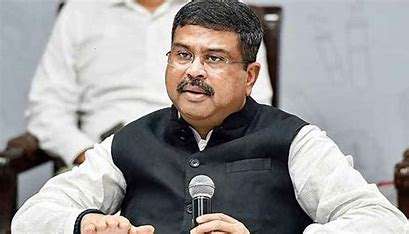New Delhi, May 26:
Union Education Minister Dharmendra Pradhan on Sunday reiterated that the National Education Policy 2020 represents a landmark shift in India’s educational landscape. Designed to modernize learning while preserving cultural identity, the Minister described the NEP as a vision document that seeks to build “globally competitive citizens with deeply rooted Indian values.”
While addressing an academic symposium in New Delhi, Mr. Pradhan stated that the policy’s primary aim is to create an education system that is dynamic, inclusive, and adaptable to future challenges. “The NEP is not just about curriculum changes—it is about transforming how we approach learning at every stage,” he said.
Overhaul of the School Education Structure
One of the major reforms under NEP 2020 is the restructuring of the school education format from the old 10+2 system to a new 5+3+3+4 model. This structure incorporates early childhood care and education, recognizing its importance in cognitive and emotional development.
Mr. Pradhan emphasized that the policy’s focus on foundational literacy and numeracy reflects a child-centric approach. He further underlined the significance of regional languages in early education, stating, “Children learn best in their mother tongue; this initiative strengthens comprehension and confidence in the learning process.”
Reforms in Higher Education
The NEP proposes significant changes in the higher education framework as well. Plans include establishing Multidisciplinary Education and Research Universities (MERUs), encouraging institutions to offer broader academic flexibility, and phasing out outdated programs like the MPhil.
The policy also aims to raise the Gross Enrollment Ratio (GER) to 50% by 2035 and introduce flexible degree options with multiple entry and exit points. Academic credits will be stored in a Digital Academic Bank, enabling students to pursue studies at their own pace and across various disciplines.
According to the Minister, these measures will create a more open and adaptive higher education environment. “Students will be able to move across streams and institutions without penalty, promoting both academic freedom and innovation,” he added.
Focus on Technology and Equity
To ensure widespread access and uniform implementation, Mr. Pradhan mentioned that both the central and state governments are working in coordination. The policy also highlights the need to strengthen digital education tools, including platforms like DIKSHA and SWAYAM, particularly in remote and rural areas.
Special provisions have been made for teacher training, vocational education, and skill-based learning. These, the Minister said, are necessary to meet the demands of a fast-evolving job market while promoting entrepreneurship and self-reliance.
In closing, Mr. Pradhan called the NEP 2020 “a foundational step toward reshaping India’s academic future,” adding that it strikes the right balance between technological advancement, educational equity, and cultural preservation.



